Looking for the best way to know when, how and how much to water your tomato plants this year?
Knowing when and how to water your tomato plants is critical in making sure your plants grow and mature properly – and, even more, to give them the best possibility of producing a sizeable harvest. Without the proper amount of moisture, tomato plants can struggle to grow, let alone create strong bloom sets.
Tomato plants draw moisture through their roots to send to the rest of the plant. If that moisture isn’t available, the roots begin to dry out. Unfortunately, when that occurs, the roots shrivel and lose their ability to take in nutrients from the soil. And without that power, tomato plants simple can’t produce tomatoes!
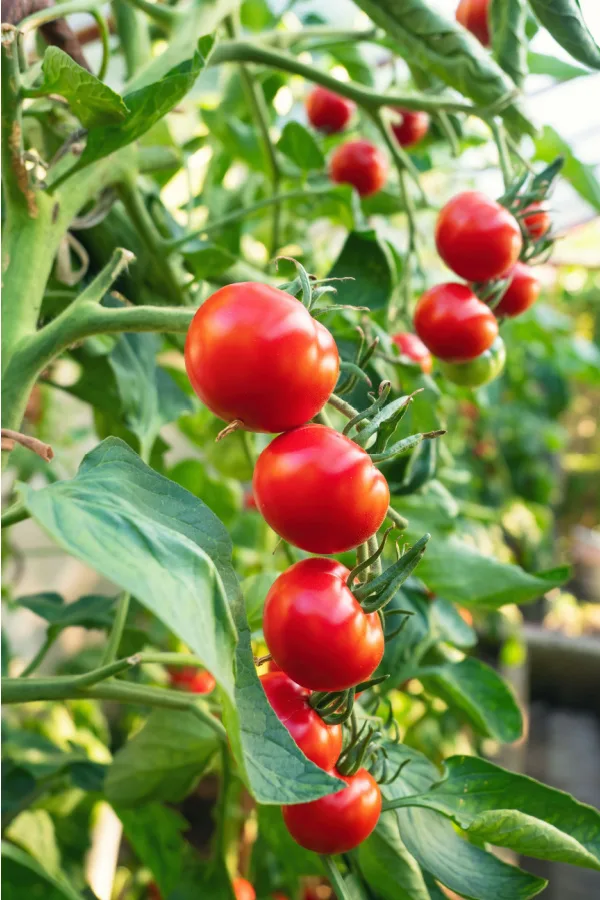
On the other side of the spectrum, when a tomato plant gets too much water, their roots swell up. And when that happens, just like when they shrivel, they also lose the ability to absorb vital nutrients from the soil.
Overwatering actually is even harder on tomato plants. Overly saturated roots not only can’t feed the plant, they are also more likely to suffer rot, which can play a huge role in reducing the overall growth and vitality of the plant
So how do you know just how much water to give to your tomato plants? And what is the best way to give them the water they need when they need it? It all starts with knowing the signs of over or underwatering, and knowing how to tell the moisture level in your soil.
Recognizing The Signs Of Overwatering Or Underwatering Tomatoes
When it comes to overwatering or underwatering tomato plants, there are a few obvious signs to be on the lookout for.
The biggest indicator of a tomato plant lacking water is having their stems and branches begin to sag and their leaves wilt. As plants begin to dry out, the leaves will also often begin to curl. Eventually, without moisture, the leaves will turn brown and fall off altogether.
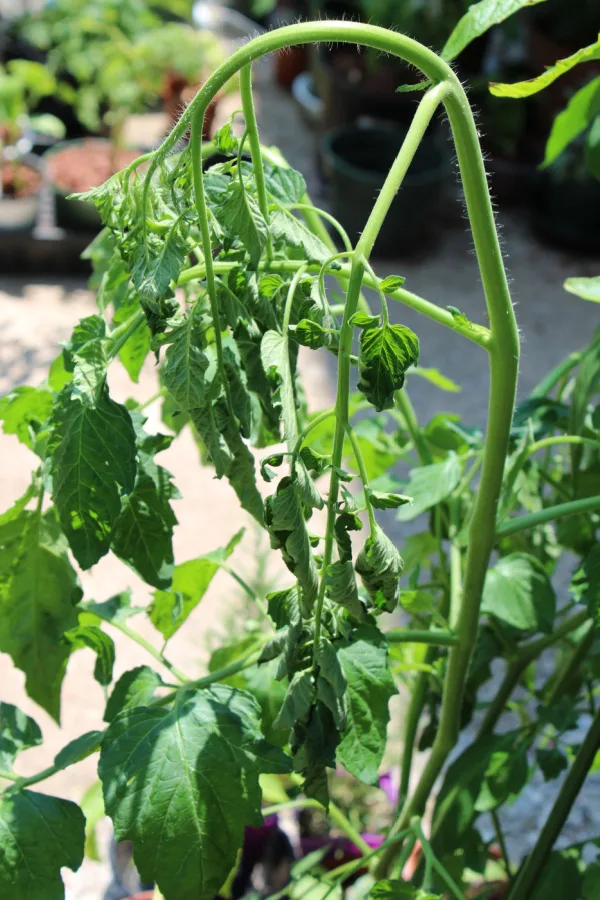
The biggest sign of overwatering is having the leaves at the bottom of your plants begin to turn yellow. They do this because the roots are swollen and unable to garner nutrients from the soil. Plants that are getting and sitting in too much water will also look droopy as opposed to standing erect when overwatered.
One sign to not pay attention to is the soil surface! It simply is not a very good indicator of a tomato plant needing water. Quite often, the soil surface can be bone dry. But underneath, by the roots, there is still plenty of moisture – and if you water at this point, you risk giving your plants too much.
Best Ways To Water Tomato Plants
Overall, tomato plants need one to two inches of water each week to stay healthy and strong. This amount takes into account total rainfall as well as hand watering. However, the overall water needs can vary a bit depending on a few outside factors.
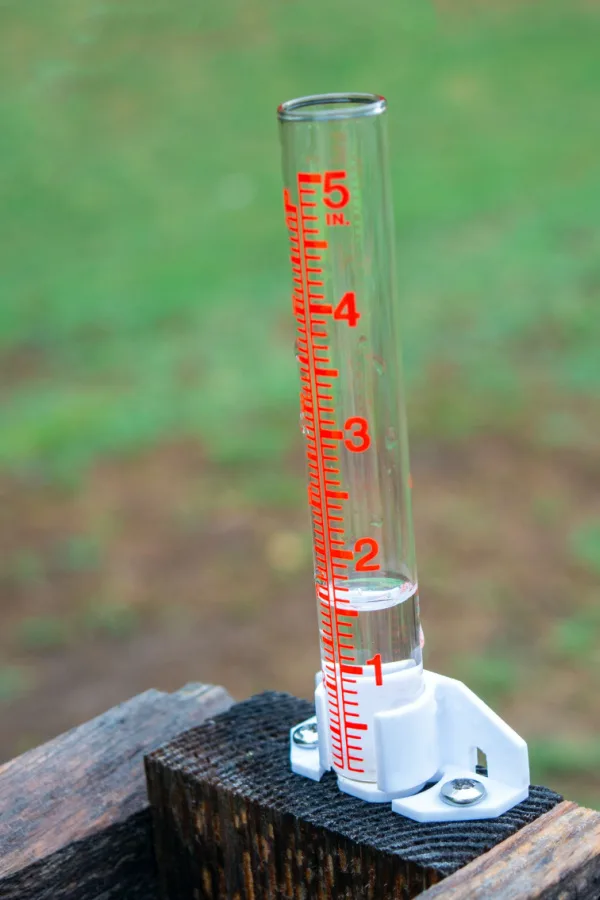
Climate and weather conditions are two big factors that also play a big role in how little or how much to water. If you live in a location that receives little to no rain and the air is dry, you will need to water tomato plants more often. And, if you live in extreme areas of heat, more than two inches per week will most likely be necessary.
Last but not least, where you grow your tomato plants also make a difference in watering. Those planted in the ground will need less water than those growing in containers or raised beds. No matter where you live, the one constant for knowing when to water and when not to is checking the moisture level at the root level.
Checking For Proper Moisture
While the top few inches might appear dry and cracked, the soil 6 inches down might be adequately moist. On the flip side, the soil at the top might look fully saturated and moist, but digging down a couple of inches might reveal dry soil.
What matters most is what is going on down at root level. There are a couple of ways to check root level moisture. Some gardeners opt to use a long skewer and push it down deep. Once they pull it out, if there is any dirt is sticking to it, they know there is moisture present. If it’s totally dry, it’s time to water.
Another great way (and very accurate of doing this) is by using an inexpensive soil moisture probe. It gives an exact moisture level reading to know what is going on under the soil.
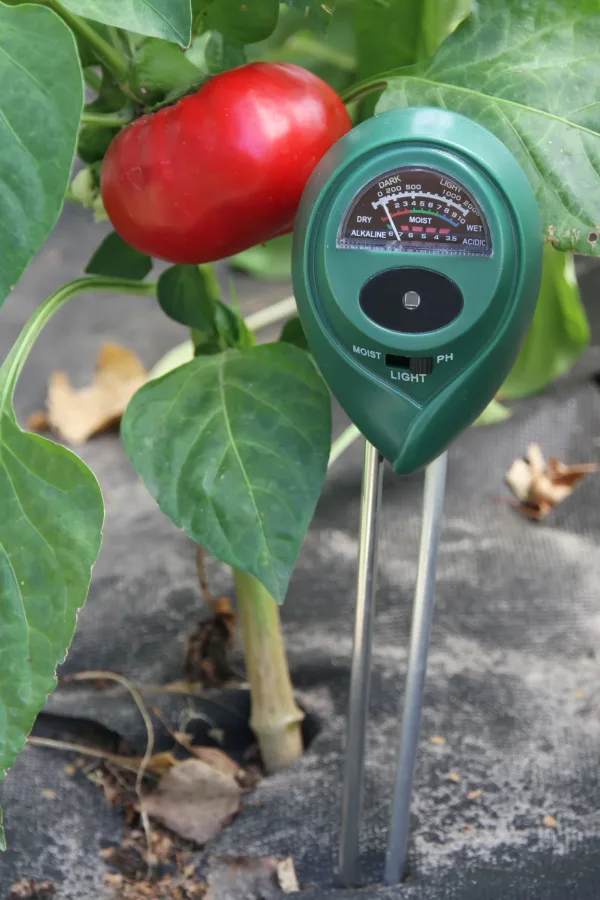
To use, push the tip of the probe down at least 6 to 8 inches into the soil. If the probe reads anywhere between 45 to 75%, your plants do not need water. If it’s below 45%, it’s time to water – and if it’s over 80 – you might have water-logged tomato plants!
Moisture probes are really a great investment. They can be used for all different types of plants, not just tomato plants. You can use the probe for hanging basket plants, container plants, and even indoor plants too. (Affiliate Product Link: Soil Moisture Meter)
Watering Tomato Plants For Success
When is time to water, there are two huge keys to giving your plants water in the best way possible. The first key is to water low -and the second is to water slow!
Always avoid watering plants from overhead and getting moisture on all of the foliage. Water standing on the foliage will not only evaporate quickly but it can also increase the chance of mildew and mold. High spray also increases the chances for splashing soil borne spores like blight onto your plants.
Instead, water plants right at the base at their root zone. Use about half a gallon for younger plants and around a gallon for established, mature plants. Again, keep in mind the amount of rainfall you have received during the week as well before watering.
In addition to watering low – it’s also vital to water slow! Slowly applying the water allows it time to soak in and sink down deep. It also prevents the water from just draining off and away from the plant’s root zone.
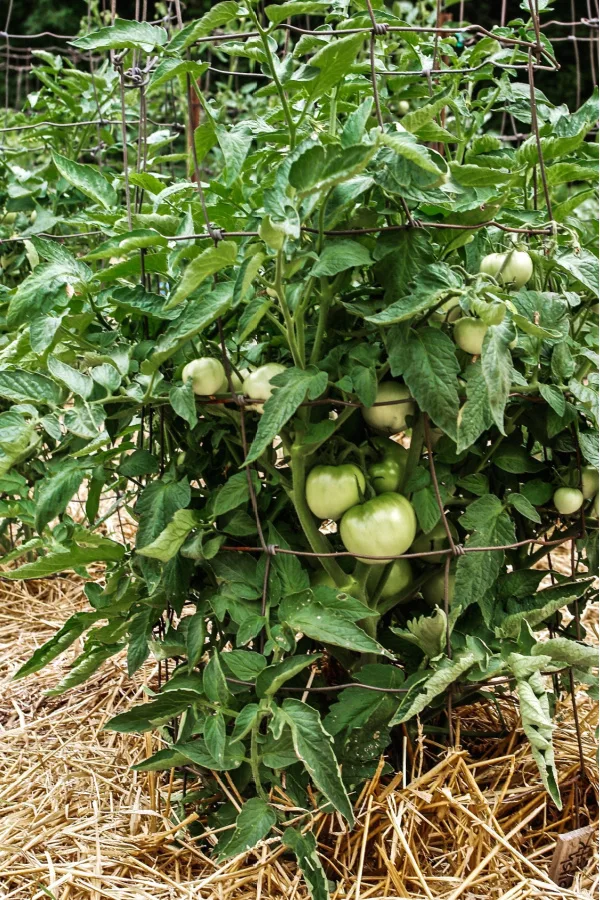
By putting moisture deeper into the soil, the roots will grow down deeper in the soil to search for it. When your plants grow deeper roots, they are better supported as they grow. The roots will also have more access to nutrients and resources deeper in the soil.
Finish With Mulch
Last but certainly not least, always be sure to mulch around your tomato plants. Adding a four to six inch layer of a good organic mulch such as straw, shredded leaves or grass clippings will help the soil retain moisture.
Mulching allows you to water less often because the water doesn’t evaporate as quickly compared to drying out in bare soil. Even more, mulch also helps keep the soil from getting too hot during the day in the hot summer sun, or too cool at night when temperatures drop. And the more steady the soil temperature stays, the better your plants grow.
The benefits of mulch for tomato plants doesn’t stop there. It is huge for keeping competing weeds at bay, and helps immensely in preventing soil-born diseases such as blight. A good layer of mulch can protect blight spores in the ground from splashing up onto the lower foliage of the tomato plants.
For more on mulching vegetable plants, check out The 3 Biggest Mistakes Made When Mulching Vegetable Plants – And How To Avoid Them! Here is to watering your tomato plants for big success this year – and enjoying your biggest and tastiest harvest ever!
Follow Our Facebook Page For Even More Great Tips! Simple Garden Life Facebook Page
Simple Garden Life is a website dedicated to keeping gardening fun, simple and enjoyable! We publish two new articles each week along with a new garden podcast episode every two weeks. This article may contain affiliate links.
